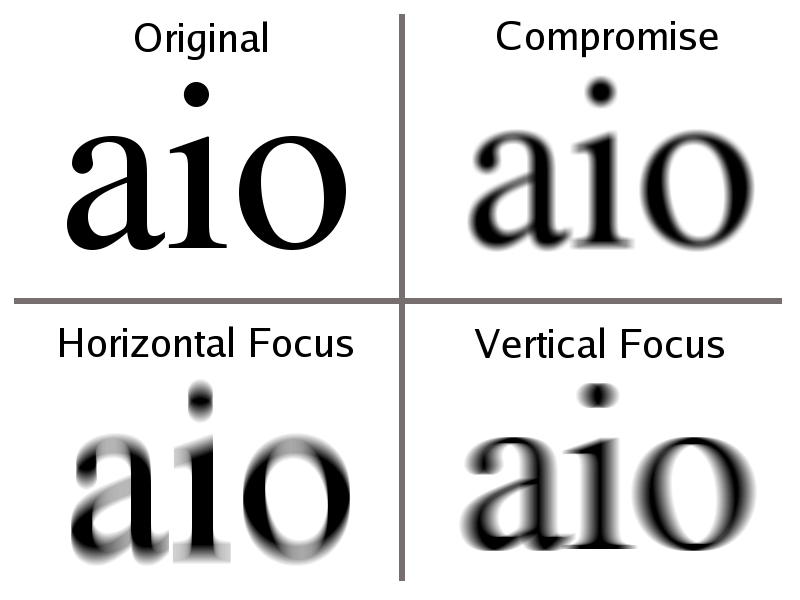What Is Astigmatism? What are the symproms of Astigmatism? Information on Astigmatism types, diagnosis etc.
Astigmatism; is a condition of the eye in which part of an object being viewed appears blurred while part is clear. In astigmatism a ray of light passing through the eye is bent so that the light does not focus to a single point on the retina. Mild astigmatism is unnoticed by the viewer; however, refractive errors of appreciable size will prevent the eye from forming a clear image and thus decrease visual acuity.
Symptoms of astigmatism vary from a mild frontal headache or drowsiness related to the use of the eyes, to more severe pain, irritability or fatigue, and occasionally nausea. If a marked astigmatic error is not corrected, congestion of the membrane covering the eyeball and inner eyelid or infection of the lid margins may result. Astigmatism is grouped into two types: irregular and regular.

Source : wikipedia.org
Irregular Astigmatism:
The multiple radiating lines of light that appear around a faint source of light, such as a star, are a common example of the small amount of irregular astigmatism that is present in all eyes. However, if a marked amount of irregular astigmatism is present visual acuity will be poor.
This type of astigmatism results from the interruption of light rays caused by a disorder of the cornea, lens, or the jellylike material in the eye. The interruption usually is a result of injury to or disease of one of these eye parts, causing an irregularity of the surface and a consequent distortion of the light rays as they pass through.
In irregular astigmatism, a perfect retinal image cannot be formed by lens correction. Instead the condition that causes the irregular refraction must be removed or corrected. For example, a cone-shaped corneal surface can be made spherical by the use of special therapeutic contact lenses, or an irregular crystalline lens of the eye can be removed.
Regular Astigmatism:
In regular astigmatism, different regions of the eye, instead of focusing on the center of the retina (normal), focus on different posterior planes of the eye—that is, either in front of the retina (nearsighted), or behind the retina (farsighted). The effects of regular astigmatism can be demonstrated by viewing two lines that are at right angles to each other. In every case of regular astigmatism, there is one direction in which lines are most distinct and one at right angles to this in which they appear most blurred or confused.
In simple astigmatism, which is one type of regular astigmatism, one region of the eye is normal while the other is either nearsighted or farsighted. Thus, when viewing two perpendicular lines, the line that represents the far-sighted or nearsighted error is out of focus and appears fuzzy, while the other line is in clear focus.
There are two other types of regular astigmatism. In compound astigmatism, both regions of the eye are either farsighted or nearsighted; in mixed astigmatism, one region is farsighted while the other is nearsighted.
The simple form of astigmatism is corrected by cylindrical lenses that redirect the rays of light only in the regions of the eye that are out of focus. In the combined and mixed forms, the cylinder is added to spherical lenses in order to produce a clear image on the retina.
***This article is for informational purposes only. It is not a doctor warning or recommendation.